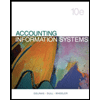
Internal Control: Internal control refers to the policies, and plans of the business organization along with other measures with a view to safeguard its assets, encourage the employees to adhere to the plans, to improve on the operational efficiency, and to ensure correct and reliable accounting information. Internal control is a process which ensures continuous reliability of accomplishment of a company’s objectives, related to operations, financial reporting, and in conformity with laws and regulations.
Five elements of internal control:
- Control Environment: Control Environment refers to the attitude of top brass of the company or the corporate culture. The top brass of the company must set the tone to improve the morale for rest of the employees of the business.
- Risk assessment: The business must be able identify the risk associated with it, and accordingly use the internal control to safeguard its assets and ensures fairness in presentation in accounting information.
- Control procedures: The objective of setting the control procedure is to ensure that the business achieves its objectives.
- Monitoring controls: The internal control used in the business is being monitored by the internal auditors who are hired by the business, to ensure that the employees are adhering to the policies of the business and running the operations efficiently. The external auditors on the other hand ensures that the business accounting records are being maintained in accordance with the Generally Accepted Accounting Principles (GAAP).
- Information and communication: Information and communication system is important for a business and hence only authorized persons should be allowed the access to the confidential accounting information. Approvals are also should be made mandatory for the transactions by the
control system.
Given: WH Company has installed self-check-out lanes.
To prepare: Brief memo to the instructor suggesting features and capabilities for K that serve as control procedure.
Trending nowThis is a popular solution!

Chapter 7 Solutions
Corporate Financial Accounting
- Can you solve this general accounting question with accurate accounting calculations?arrow_forwardZento Audio sells premium wireless headphones. The unit selling price is $95, the unit variable cost is $48, fixed costs are $180,000, and current sales are 12,000 units. How much will operating income change if sales increase by 5,500 units?arrow_forwardI am trying to find the accurate solution to this financial accounting problem with the correct explanation.arrow_forward
- Eliza Company had credit sales of $1,450,000 for the year. Based on past experience, they estimate that 2.3% of credit sales will be uncollectible. Calculate the Bad Debt Expense for the year.arrow_forwardI need help with this financial accounting question using the proper financial approach.arrow_forwardEliza Company had credit sales of $1,450,000 for the year. Based on past experience, they estimate that 2.3% of credit sales will be uncollectible. Calculate the Bad Debt Expense for the year. Helparrow_forward
 Pkg Acc Infor Systems MS VISIO CDFinanceISBN:9781133935940Author:Ulric J. GelinasPublisher:CENGAGE L
Pkg Acc Infor Systems MS VISIO CDFinanceISBN:9781133935940Author:Ulric J. GelinasPublisher:CENGAGE L Auditing: A Risk Based-Approach to Conducting a Q...AccountingISBN:9781305080577Author:Karla M Johnstone, Audrey A. Gramling, Larry E. RittenbergPublisher:South-Western College Pub
Auditing: A Risk Based-Approach to Conducting a Q...AccountingISBN:9781305080577Author:Karla M Johnstone, Audrey A. Gramling, Larry E. RittenbergPublisher:South-Western College Pub Accounting Information SystemsAccountingISBN:9781337619202Author:Hall, James A.Publisher:Cengage Learning,
Accounting Information SystemsAccountingISBN:9781337619202Author:Hall, James A.Publisher:Cengage Learning, Survey of Accounting (Accounting I)AccountingISBN:9781305961883Author:Carl WarrenPublisher:Cengage Learning
Survey of Accounting (Accounting I)AccountingISBN:9781305961883Author:Carl WarrenPublisher:Cengage Learning



